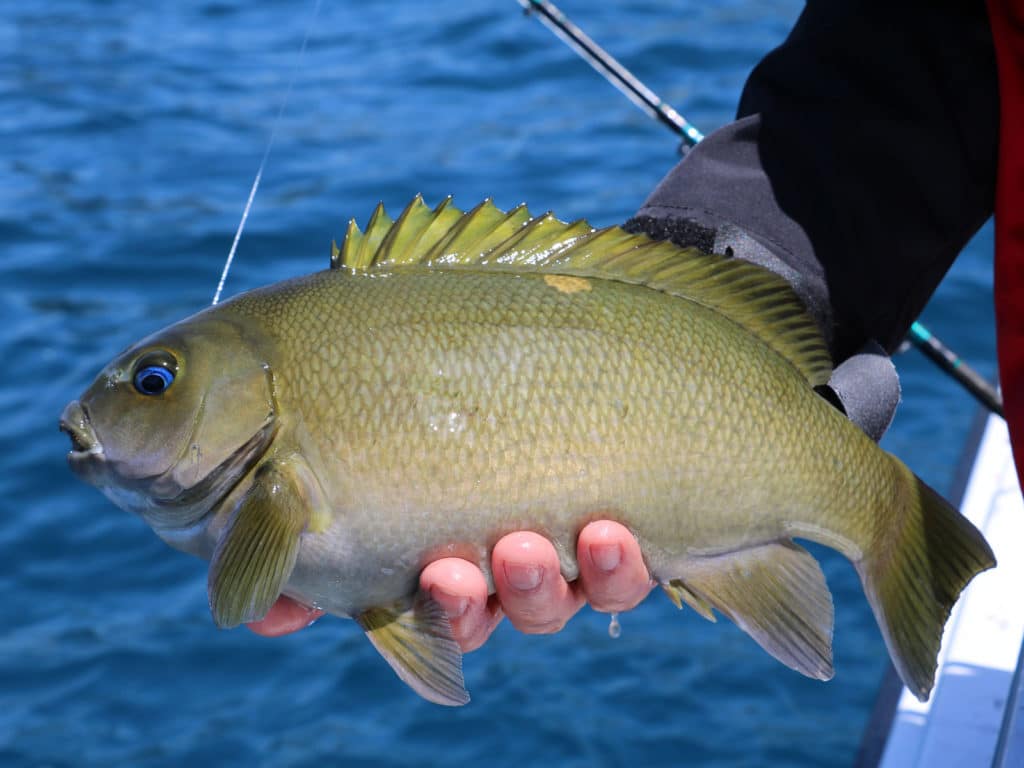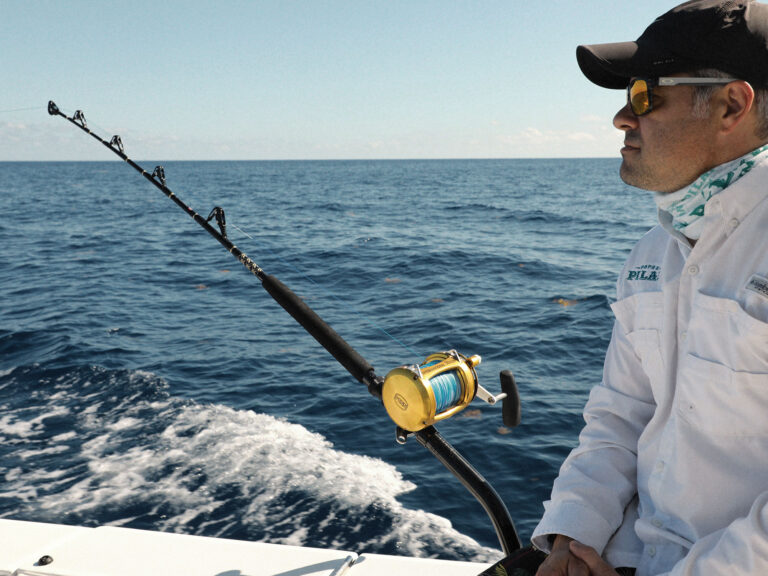
The small fish that Steve Bowcott of Saugus, California, hooked on the back side of Southern California’s Catalina Island raised no hope of being the yellowtail or white seabass he was after. But it sure raised questions — as to its identity. Bowcott says the small fish “ate a live squid that I fished on 25-pound test with a small sliding egg sinker in about 35 feet of water.” The angler says the fish measured about 16 inches, weighing a couple of pounds.
“That green beast with the bright blue eye and the light blotch on its back is an opaleye, Girella nigricans,” says California-based Milton Love, one of our Fish Facts experts. “This is a reef species found from Oregon to the tip of Baja California with an isolated population in the Gulf of California. Juveniles live in tide pools and then migrate onto nearshore reefs (to depths of about 100 feet) as they mature,” Love says.
Love typically sees them in small schools within a few feet of the bottom, but says Bowcott’s catch is rather unusual.
“Opaleye feed primarily on algae — gleaning nutrients from both the plants and the small animals that live on them. Anglers most often catch them on such fare as mussels or green peas, and only very, very rarely on a whole squid.”
Speaking of mussels, that’s what the IGFA all-tackle world-record opaleye was caught on — in Monterey in 2019. For an opaleye, it was indeed a whopper at four pounds. The opaleye isn’t really a commercial species — occasional catches are by recreational fishermen — though Love says do they turn up occasionally in large fish markets of Southern California. “Personally,” he adds, “I think they taste terrible, but what the hey, some people like eggplant so what do I know?”
Milton Love PhD, a research biologist at the Marine Science Institute (UC Santa Barbara) is one of Salt Water Sportsman’s fish facts experts. He is the author of several superb books on Pacific Coast fishes. Type in his name in an Amazon book search to see and/or order any.









